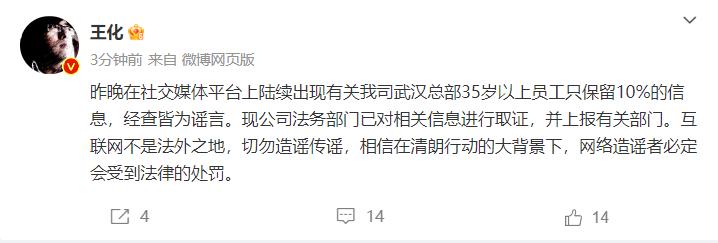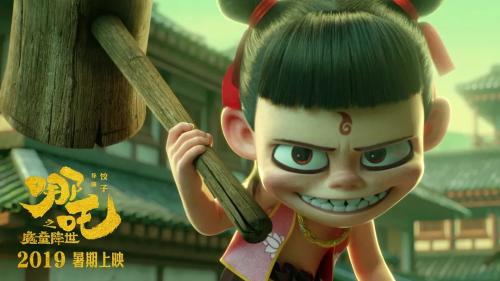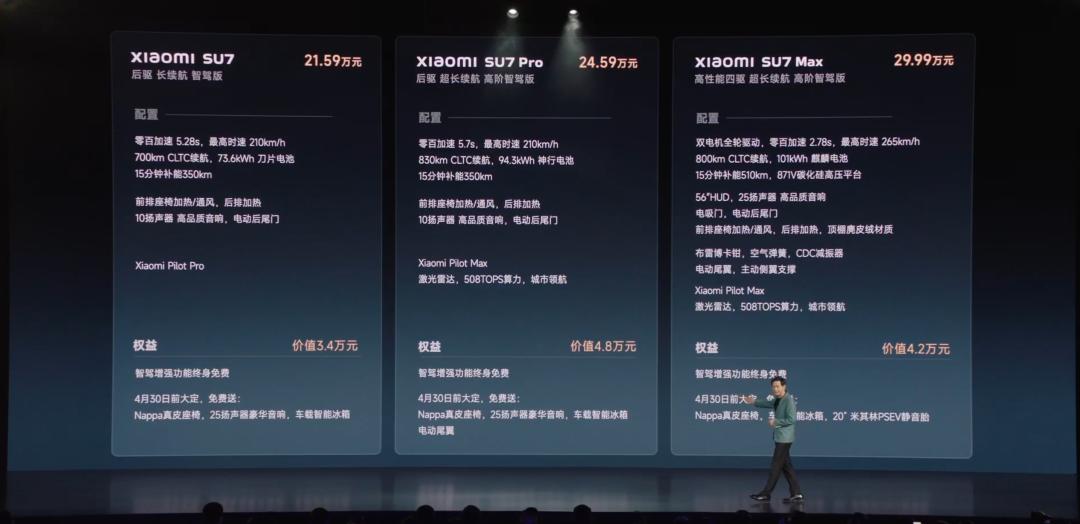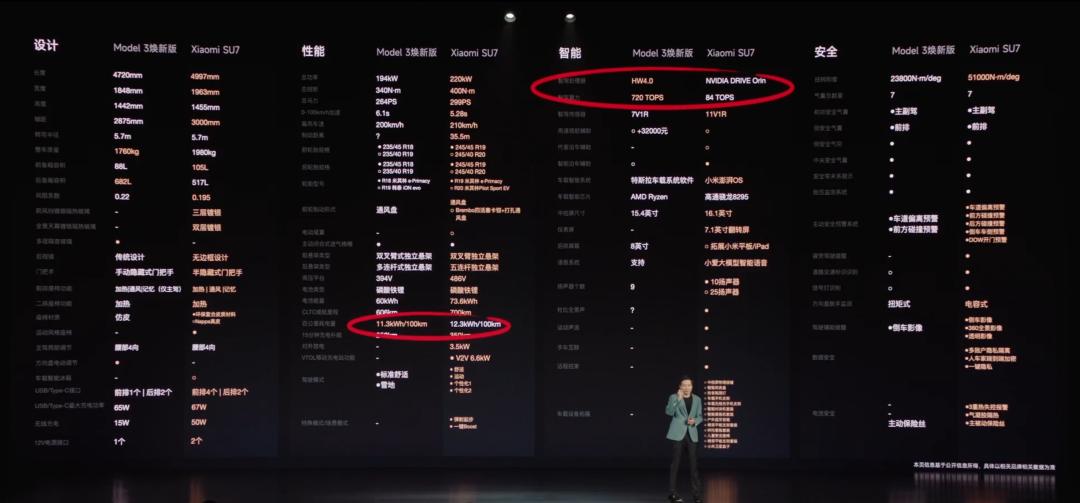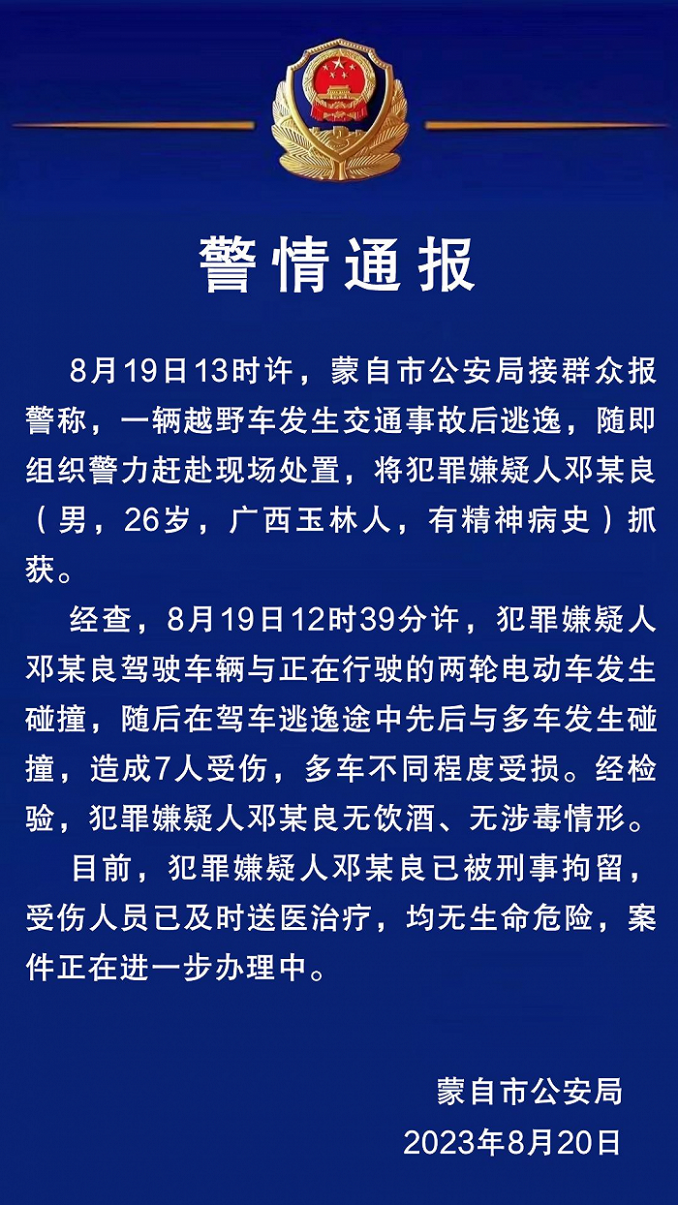Copyright statement: The copyright of this article belongs to Netease Auto, please indicate the source.
Netease Auto reported on May 15th. In recent years, China auto market has undergone drastic changes due to the transformation of new energy. The stable seats in the past have been shaken, especially the inherent position of joint ventures is being gradually disintegrated and eroded by excellent domestic independent models. Consumers’ concept of car purchase is no longer conventional, and new energy and intelligence have become the two major driving forces.
In the face of increasingly fierce market competition, Harvard, a global SUV expert, takes Xiaolong MAX (
丨 picture) as a banner, striding into the new energy finals. With years of concise technical strength, the Great Wall has given the brand-new Hi4 electric four-wheel drive a head start, and the intelligent cockpit and intelligent driving are the killer.
Do people really need four-wheel drive? In the past, four-wheel drive failed to gain popularity because of what obstacles? In the days when Haval Xiaolong MAX was freshly baked, we had an in-depth experience with this powerful car that was full of materials and full of new ideas.
Do people need four-wheel drive?
Multi-purpose and high performance should be the background color of SUV. Four-wheel drive and SUV should be a natural pair, but due to cost restrictions, fuel consumption burden and high maintenance costs, four-wheel drive is not popular in home SUVs. However, as we all know, the four-wheel drive system has a comprehensive improvement effect on driving, safety and performance.
Four-wheel drive can keep the ideal driving force of the vehicle at all times, and it can still ensure the driving performance of the vehicle when one or part of the wheels slip. In this way, the driving performance of the vehicle is better when driving in curved roads, wet roads or unpaved bad road conditions, and the occurrence of unsafe situations such as out of control is reduced. In the section where mountain cities like Chongqing need to climb frequently, the four-wheel drive has stronger driving performance than the predecessor model, reducing the occurrence of front wheel slip, thus ensuring the driving performance of the vehicle in all road conditions.
With the development of automotive electrical technology, the four-wheel drive technology, which was difficult to reach in the mechanical age in the past, has become smarter and more efficient. Haval Xiaolong MAX’s new intelligent four-wheel drive electric hybrid technology Hi4 optimizes the outstanding lemon hybrid technology through innovative technological innovation, and realizes the electric four-wheel drive with rear drive as the main part under the similar structure through the double motor layout of front and rear axles, which is really a genius operation.
The new intelligent four-wheel drive electric hybrid technology Hi4 shines brilliantly.
The most topical thing about Haval Xiaolong MAX is the first model equipped with Hi4 intelligent electric hybrid four-wheel drive system of Great Wall Motor, which is a major technological innovation with the popularization of technology and equal rights in technology.
The power system consists of a brand-new 1.5L high thermal efficiency engine, a two-speed hybrid special transmission, a 150kW rear axle motor and a high-safety and high-performance battery pack. The comprehensive power is 205kW, the torque is 585N·m, and the 0-100km/h acceleration takes only 6.8 seconds.
In the feed state, the test experience covers mountain roads, urban expressways, and morning and evening peak traffic jams. Let’s talk about the fuel consumption level first. Fuel saving is the basic skill of a new energy PHEV model.
In the more common urban expressways, the fuel consumption of the feeder can reach the level of 5.5L/100km, which will refresh many people’s inherent impression of SUV. Haval Xiaolong MAX has a brisk and neat start, giving full play to the technical advantages of electric drive performance. The speed-up process is light and silky, and it will not feel like a "jump" like many electric vehicles. The level of power release adjustment reflects Haval’s technical background as a big factory.
In response to the morning and evening rush hour traffic jams, it is suggested that pure electric driving is more environmentally friendly and economical, and the overall dynamic performance is smooth and brisk, which makes the annoying traffic jams smooth and smooth.
Subsequently, we drove Haval Xiaolong MAX into the mountain road again. With the ups and downs of the mountain road and the challenges of many corners, the fuel consumption did not increase significantly, and it remained at the prefix of 6. Driving on the mountain road required frequent speed changes. The simultaneous energy recovery characteristics of the front and rear axles of the Hi4 system greatly transformed the deceleration into battery energy storage, which is also the technical guarantee for the economic fuel consumption of the Hi4 in all road conditions.
Let’s talk about the driving characteristics of Hi4 again. Because the motor power of the rear axle is higher, in most cases, the vehicle is driven by the rear wheel, which ensures the handling performance of the vehicle, especially in the process of climbing the mountain road and following the curve, and can feel the dynamic enjoyment brought by the rear wheel driving the vehicle.
Four-wheel drive can also intervene in time when overtaking or climbing, because the front axle retains a small motor and can also be connected to the engine direct drive. Therefore, when necessary, the three powers will exert force at the same time, bringing more abundant driving force forward. This is an all-round driving technology with both energy efficiency and performance.
The power performance is bright, and the chassis can’t be neglected. Haval Xiaolong MAX adopts the front McPherson independent suspension and the rear trailing arm three-link independent rear suspension. The texture of the chassis is still relatively thick, and the suspension is relatively soft, which can provide good comfort for daily driving. For example, deceleration and some fine vibrations are handled comfortably.
In addition, in the suburban test, we also experienced a section of unpaved pavement, which is a piece of cake for the tough chassis of Haval Xiaolong MAX. The long suspension stroke of SUV can keep the adhesion of four wheels as much as possible, and reduce the loss of driving force in suspension. The driving force dominated by rear drive will be more suitable for getting out of trouble and climbing hills than the front drive, which reduces the occurrence of in-situ tire scratching.
In addition, the direction setting of Haval Xiaolong MAX belongs to a relatively light range, which is suitable for most home users to choose. With iTVC intelligent torque vector control system, the torque of front and rear axles can be dynamically adjusted in real time, which effectively inhibits the skid of low-adhesion roads and understeer or oversteer when cornering, thus ensuring the handling stability of vehicles.
In terms of quietness, the quietness of Haval Xiaolong MAX is very worthy of recognition at low speed or in pure electric mode due to plug-in and hybrid. When the engine is involved, the car can still feel a slight vibration, but the noise of engine operation is personally considered to be a normal level, and the impact on the car will not be obvious.
In the scene of daily commuting and long-distance travel, the L2+ intelligent driving assistance system for coffee can provide intelligent driving assistance functions including ACC full-speed adaptive cruise, intelligent cruise, lever change (HWA), intelligent cornering, intelligent dodge active emergency braking, lane departure warning, lane keeping and emergency lane keeping assistance. These functions can effectively assist users to boldly try the convenience brought by driving assistance technology within a safe range.
Brand new image, brand new design
Haval Xiaolong MAX not only boldly innovated in technology, but also brought a brand-new car experience, and the brand-new design also made people shine! The exterior design is inspired by domestic fighters, and the new vision of "Xiaolong Series" formed by parameterized borderless air intake grille and sharp headlights is Harvard’s charge horn for entering new energy sources. Compared with the previous Haval models, the recognition is more prominent, and the detailed customers are more exquisite, which makes Haval Xiaolong MAX show a more resolute and courageous temperament.
In terms of size, the length, width and height are 4758/1895/1725mm and the wheelbase is 2800mm respectively. It is positioned as a medium-sized SUV, which is large enough to ensure the practicality of vehicle space and also occupies the dominant position of domestic new energy SUVs in the price range of 150,000-200,000.
It is reported that the decorative modeling elements at the bottom of the tail are designed with reference to the jet twin tails of fighter planes, and the exquisite dress of the "Cloudtail Flash Diamond" taillights can be seen inside the taillights.
The fuel filler and charging interface (fast charging+slow charging) of Haval Xiaolong MAX are on the left and right sides of the car body respectively. For PHEV models, it is necessary to provide fast charging interface, which means that it is more convenient for the owner of selfless piles to replenish energy in daily life scenes. After all, it is unlikely to find public slow charging piles now.
According to official data, Haval Xiaolong MAX NEDC has a pure electric cruising range of 105km, 33kW DC fast charging, and the power is from 30% to 80%, and the fast charging is less than 30 minutes; The discharge power is 3.3kW, and the efficiency is higher.
A brand-new interior full of technology
It is precisely because of the high starting point of positioning high-end home SUVs that the overall configuration level and function setting of Haval Xiaolong MAX also interpret the word "high-order". The brand-new interior layout, which represents the transformation of Haval brand into a new energy smart car, reconstructs the functional area. The most conspicuous position consists of two mobile phone brackets with a wireless charging panel on the left.
Haval Xiaolong MAX has a unique 3×12.3-inch through extrasensory suspended large screen of the same class. That is, the 12.3-inch full-color LCD central control panel +12.3-inch full-color LCD auxiliary driving panel+12.3-inch full-color LCD instrument will directly fill the scientific and technological atmosphere of the entire cockpit.
The car system adopts a new generation of Coffee OS intelligent cockpit, and the hardware is equipped with advanced mainstream computing chips. With the excellent software interaction of the user experience, the intelligent experience with quick response and comprehensive operation experience is realized. The voice interactive system can accurately understand your demands with natural semantics, with fast response speed, and can achieve "visible to say", millisecond speech recognition with extremely fast response, with a word of ten meanings, freeing hands and bidding farewell to the mechanical man-machine dialogue of asking and answering questions in the past.
The widely promoted "co-driver entertainment screen" also appeared in the Great Wall Haval car for the first time. The mainstream online audio-visual entertainment is readily available, and the entertainment, navigation and function settings in the car dominated by the co-driver can be satisfied.
I know that many people are worried that the drama will affect the driving safety. The entertainment screen of Haval Xiaolong MAX supports independent Bluetooth channel connection, so that the co-driver and the car stereo do not conflict and do not disturb each other.
Xiaolong MAX is also equipped with a series of practical technology configurations, such as W-HUD head-up display, humanized inductive charging, seat ventilation and heating, automatic parking, tracking and reversing, etc. For charging management, remote charging operation and reservation charging service can also be carried out, which fully meets the needs of modern urban life.
As a brand-new model of Harvard, the ride comfort experience and NVH performance have been comprehensively improved. Haval Xiaolong MAX reduces the interference such as wind noise, tire noise, acoustic noise and road impact through vehicle structure optimization and application of sound insulation materials, and improves the overall driving comfort, and the sound is clearer under high-speed working conditions. Among them, 35 parts of the vehicle body are made of sound-absorbing materials, and the coverage area of sound-absorbing materials is increased in key parts such as side walls and door panels; The door adopts three seals, which greatly enhances the air tightness; The front windshield+front door adopts double-layer sound insulation glass, which is quiet and comfortable even when driving in urban areas.
Not only that, the front seat of Haval Xiaolong MAX is also designed according to ergonomic standards. The filler is moderately soft and hard, and the wrapping and support have good performance. The thick cockpit can highly isolate the noise outside the car, and with the large battery pack, it will bring a long-term worry-free entertainment experience in the car. It is very comfortable to take a nap in the car when encountering traffic jams or parking.
The space experience in the back row is particularly excellent. This is a medium-sized SUV that is very suitable for the whole family to travel. The air conditioning outlet and USB charging interface in the car are very comprehensive. In addition, there are as many as 32 storage spaces in the cockpit, which match the trunk space with a volume of 551L, while the backrest supports the 4: 6 ratio and supports the two-speed adjustment of 27 and 32. The backrest of the rear independent seat can be folded and leveled, and the space after being laid down can reach 1377L L. The functional experience at the back of the carriage is full. Don’t forget that there is also an external discharge function. With the flexible combination of trunk and rear row, it will instantly become a camping car.
The change is reflected in every detail from the inside out, but the Haval Xiaolong MAX is not just a brand-new model. It is a brand-new experience for the people and an important node for the future development of Harvard brand.
Haval’s new Xiaolong series builds a new channel.
"Xiaolong Series" is a new beginning for Haval to switch the new energy track in an all-round way, and it is a milestone to witness the transformation of Haval brand into new energy, and Haval Xiaolong MAX is a sharp knife model that cuts into the mainstream high-end new energy SUV.
The brand-new strategy requires a brand-new product image to amplify the volume. For this reason, Haval Xiaolong MAX has changed the traditional conservative modeling style with a brand-new energy technology sense.
tag
Faced with the current situation of accelerated industry transformation and serious involution, the products in SUV market are becoming increasingly homogeneous, and it is no longer possible to meet the needs of consumers by blindly stacking configuration. China people need a model with moderate price, comprehensive performance and few shortcomings.
Through the test, the core selling point and actual performance of Haval Xiaolong MAX conquered all kinds of picky car-choosers. This new energy SUV not only has excellent driving performance, but also has advanced intelligent driving technology and comfortable cockpit space. In the wave of new energy transformation, Haval Xiaolong MAX will become an ideal choice for consumers with its strong strength.
With the increasingly fierce competition in the new energy vehicle market, Haval Xiaolong MAX is leading the new energy SUV into the era of all-people four-wheel drive with its comprehensive performance advantages and excellent quality performance. As a model with moderate price, comprehensive performance and few shortcomings, Xiaolong MAX provides consumers with an attractive choice.



